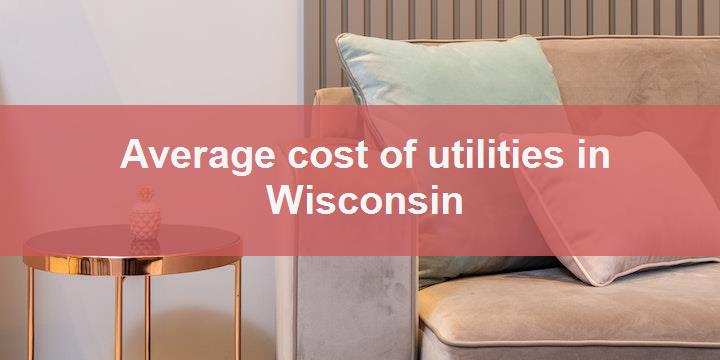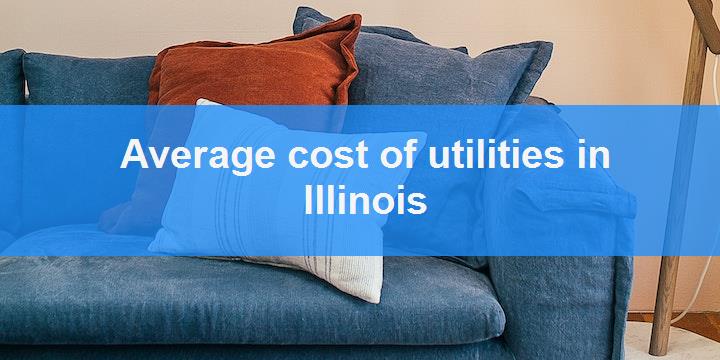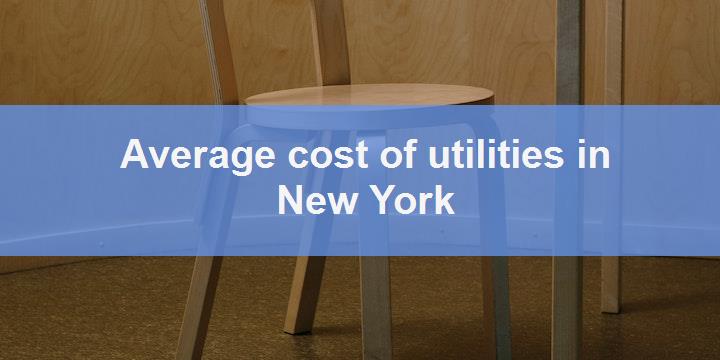Utilities play a significant role in our daily lives. They provide us with essential services such as water, gas, electricity, and even internet. Understanding the cost of these utilities is essential to managing our household finances. In this article, we will explore the average cost of utilities in Wisconsin. To begin with, let’s take a closer look at what utilities are and their importance in our lives.
Firstly, regarding the average cost of utilities in Wisconsin, in the year 2023, the monthly figure is expected to reach $400. Secondly, this cost is set to increase from the previous years, where in 2021 and 2022, the average monthly cost was $180 and $190, respectively. Moreover, this increase can be attributed to various factors, such as inflation and an increase in demand for utilities. Additionally, it is essential to note that these figures may vary based on the utility provider and the region in Wisconsin. Ultimately, it is crucial for residents to take these costs into consideration when budgeting for their overall expenses.
Average electric bill in Wisconsin
In terms of the average electric bill in Wisconsin, the numbers anticipate a notable increase in the upcoming year. By 2023, the projection is that the average monthly bill will soar to $150, an increase from the current average of $133. To put things into perspective, this translates to an annual difference of $204. Wisconsin residents had been experiencing an average increase of 1.84% per year, but this might be the biggest jump. Nevertheless, the increase is not entirely without merit, as the state is putting in more efforts into using renewable energy sources. Nonetheless, households ought to prepare for this hike by looking for ways to save on energy bills, such as by opting for energy-efficient appliances or using programmable thermostats.
Average gas bill in Wisconsin
In 2023, the average gas bill in Wisconsin is projected to rise by 5%. This represents a significant increase from the previous year. However, it is still lower than the average gas bill in Wisconsin from five years ago. Despite the rise in gas prices, there are several ways to manage the costs associated with heating a home. By making energy-efficient upgrades to your home, such as installing new windows or adding insulation, you can potentially save money on your monthly gas bill. Furthermore, taking steps to conserve energy, such as turning off lights and lowering your thermostat when you’re not home, can also help to keep your gas bill under control.
Average water bill in Wisconsin
In terms of the average water bill in Wisconsin, there has been an increase in costs over the last few years. According to recent projections, the average water bill in Wisconsin is expected to climb to approximately $63 per month in 2023. This is a considerable increase from the $58 average bill in 2020. Comparatively, in 2017, the average bill was only $52 per month. Overall, it is clear that the cost of water in Wisconsin is on the rise, making it essential for residents to budget accordingly for these increasing expenses.
Average sewage bill in Wisconsin
According to recent estimates, the average sewage bill in Wisconsin is projected to increase by a significant amount in 2023. Specifically, it is anticipated that the average bill will reach $80 per month, representing a drastic jump from the current average of $60 per month. This increase is likely to come as a surprise to many Wisconsin residents who have become accustomed to paying lower fees for their sewage services. However, it is worth noting that this is by no means an isolated incident, as cities and states across the country are grappling with rising sewage costs. Over the last several years, there has been a gradual uptick in sewage bills, with Wisconsin itself experiencing a 25% increase in average fees since 2015. Despite this, officials in the state have assured residents that these additional costs are necessary to maintain and improve their sewage systems, which are crucial for public health and the environment.
Comparison with other states
Wisconsin’s utility costs are comparable to those of several other states in the US. Starting with similarities, Michigan, Ohio, and Iowa also have generally lower utility costs compared to other states. Additionally, residents of all these states experience peak energy usage during the chilly winter months. However, there are some differences between Wisconsin and other states. For instance, compared to Maine and New Hampshire, where high heating costs contribute to overall higher utility rates, Wisconsin’s energy usage is more balanced throughout the year. Furthermore, residents of Texas and California pay considerably more for electricity compared to Wisconsinites due to factors such as larger populations and more demand for energy. Overall, while Wisconsin’s utility rates are not the highest, they are still comparable to those of other states in the US.
Factors affecting utility costs
There are several factors that affect utility costs in Wisconsin. Firstly, the climate plays a significant role in determining utility expenses as energy demands increase during harsh winters and humid summers. Secondly, the state’s infrastructure plays an essential role in determining utility costs due to aging power grids, water pipes, and other systems that increase maintenance and replacement costs. Finally, government regulations on utility providers such as environmental standards, taxes, and subsidy programs can also drive up costs for consumers. Overall, understanding these factors is fundamental in managing utility costs in Wisconsin.
How to reduce utility costs?
Firstly, one effective way to reduce utility costs is to invest in energy-efficient appliances. Additionally, adjusting the thermostat to a slightly lower temperature during the winter months and a slightly higher temperature during the summer months can also result in significant savings. Secondly, replacing incandescent light bulbs with energy-saving LED bulbs and turning off lights when not in use is another useful tip. Furthermore, fixing leaky plumbing can also decrease water bills. Lastly, scheduling regular maintenance for HVAC systems and replacing air filters can improve their efficiency and lower energy bills. By implementing these simple tips, homeowners in Wisconsin can reduce their utility costs and save money.
Trends and predictions
Firstly, it is important to note the current trends in the utility industry in Wisconsin. These trends include a shift towards renewable energy sources and an increase in energy efficiency initiatives. Additionally, utilities are focusing on improving their infrastructure and investing in smart grid technology. Looking towards the future, there are predictions that utility costs will continue to rise due to the increasing demand for energy and the need for significant investments in aging infrastructure. However, with continued emphasis on renewable energy and energy efficient practices, there is hope that these cost increases can be mitigated. Overall, keeping up with these trends and predictions is crucial for both individuals and businesses to effectively manage their energy usage and costs.
FAQ
Q: What is the average cost of utilities in Wisconsin in 2023?
A: According to the latest data, the average cost of utilities in Wisconsin for a household of 2-3 people is $400 per month.
Q: What is included in the average cost of utilities in Wisconsin?
A: The average cost of utilities in Wisconsin includes electricity, gas, water, sewer, and garbage.
Q: How does the cost of utilities in Wisconsin compare to other states?
A: The cost of utilities in Wisconsin is slightly lower than the national average.
Q: Are there any specific regions in Wisconsin where the cost of utilities is significantly higher or lower?
A: The cost of utilities in Wisconsin can vary depending on the location. Generally, rural areas may have lower utility costs due to cheaper living expenses while urban areas may have higher utility costs due to higher demand.
Q: How can I reduce my utility costs in Wisconsin?
A: You can reduce your utility costs in Wisconsin by adopting energy-efficient practices such as installing energy-efficient appliances, using LED light bulbs, and turning off electronics when not in use. You can also lower your water usage by fixing leaky faucets and taking shorter showers.
Q: Is the cost of utilities in Wisconsin expected to increase in the coming years?
A: While the cost of utilities in Wisconsin may increase in the future due to inflation and other factors, there are currently no significant indications of a significant increase in the near future.
Also Reading
Top neighborhoods in Harrisburg for families
What is the average rent in Denver?
Top pros and cons of living in Albuquerque




